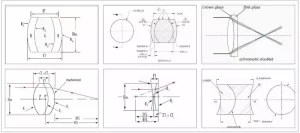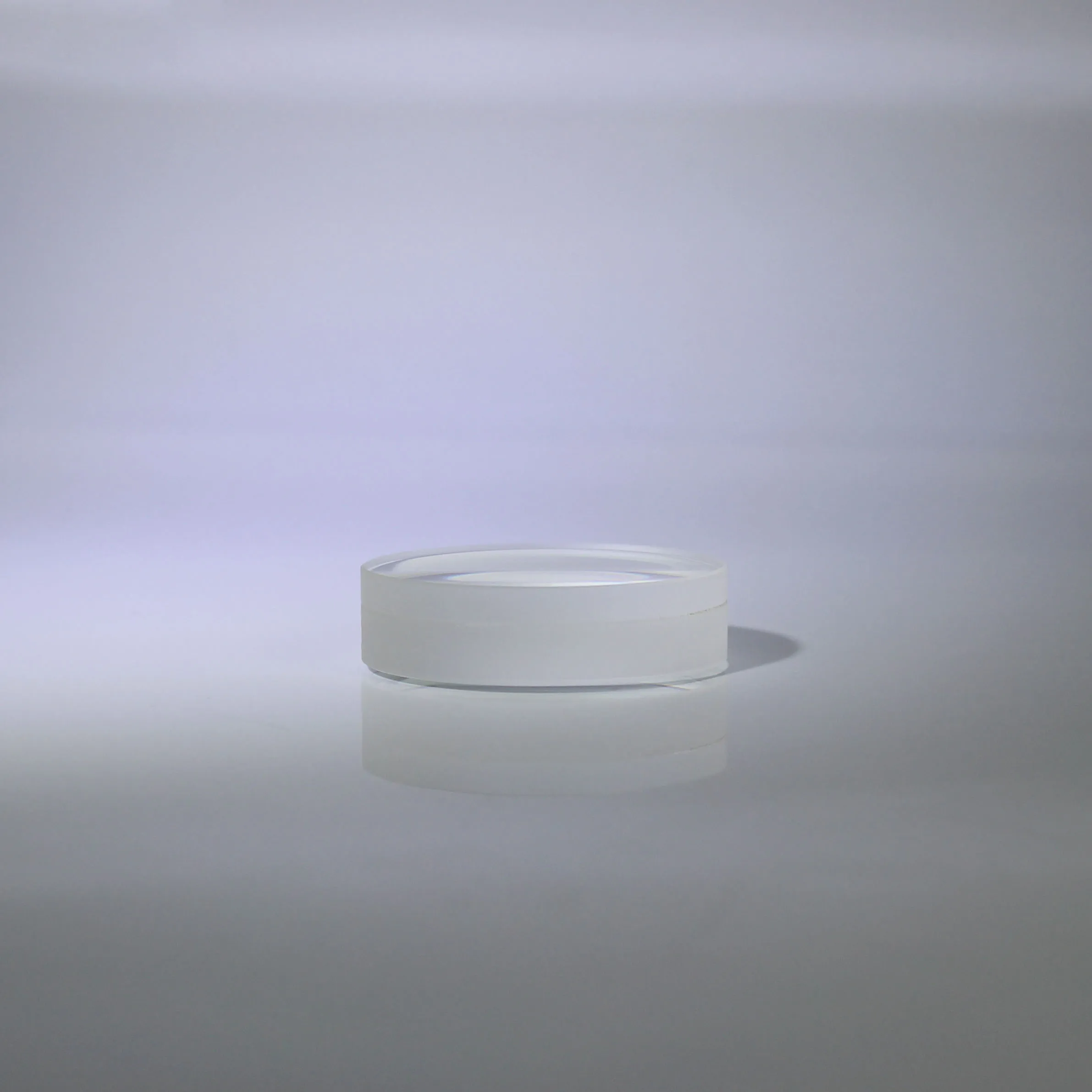Double Convex Optical Glass Glued Achromatic Lens for Camera
Dimension: 25.40mm
Tolerance: +/-0.01mm
Surface Accuracy: lambda
Surface Quality: 40-20
Clear Aperature: 87%
Coating: AR @400-700nm, R≤0.5%
Achromatic lenses, usually consisting of two optical elements cemented together.It is the most cost-effective lens for good polychromatic illumination and imaging.Achromatic are excellent focusing components for reducing chromatic aberration of broadband light sources used in many analytical and medical devices.
Achromatic lenses can be defined as a lens which is made by a combination of two different types of lenses carrying different focal powers in a manner such that the images formed by the light of both the combined lenses are free from chromatic aberration or achromatism.
Most commonly used and the earliest example of an achromatic lens is the achromatic doublet.
General structure of Achromatic lens
Achromatic doublet lens is made from a pair of glasses, of which one is typically a concave and another is convex.
The concave element of the doublet is composed of flint glass (with higher dispersion); the convex element, however, is made up of crown glass (with low dispersion). These two elements are placed (cemented) next to each other in such a manner that the chromatic aberration of the one element is balanced by the chromatic aberration of another.
There are various types of achromatic lenses, which differ in the type of lens elements and optical properties.

Application of achromatic objective lens?
Glass achromatic lenses are suitable for a variety of applications, including fluorescence microscopy, image relay, inspection and spectroscopy, and are widely used in multi lens optical systems usually composed of multiple achromatic lenses.
This Achromatic lens shows pictures

The Achromatic lens specification
|
Material |
K9 & SF2 |
|
Diameter |
40mm |
|
Coating |
AR Coating |
|
Center error |
< 60” |
|
P-V |
0.25 |
Optical glass Achromatic lenses comes in a variety of configurations, most notably, positive, negative, triplet, and aspherized. It is important to note that it can be a doublet or triplet ; the number of elements is not related to the number of rays for which it corrects. In other words, an achromatic lens designed for visible wavelengths corrects for red and blue, independent of it being a doublet or triplet configuration.
Glass Achromatic Lens Normal Precision and Limit Precision
(Material BK7, Fused Silica, SF11,B270,Sapphire, CaF2 etc. all can be customized.)
|
Specification |
Normal Precision |
Limit Precision |
|
Dimension Tolerance |
+/-0.1mm |
+/-0.001mm |
|
Thickness Tolerance |
+/-0.1mm |
+/-0.001mm |
|
Scratch-Dig |
10/5 |
10/5 |
|
Surface Flatness |
λ |
λ/20 |
|
Clear Aperture |
90% |
99% or better |
People Also Ask
- What are the benefits of achromatic lenses?
Due to the achromatic lens, colors are focused at the same point, allowing users to fully focus on the image. Compared to uncorrected monocular lenses, achromatic lenses produce clearerimages, making viewing easier and perception more accurate.
- What is the principle of achromatic lenses?
An achromatic lens can be defined as a lens composed of two different types of lenses with different focal lengths, in such a way that the image formed by the light of the two combined lenses has no chromatic or achromatic aberration.
- Does achromatic mean without color?
Achromatic means literally “without color”. It may refer to: Achromatic colors, “greys” or “neutral colors”, also black or white.
Our Ordering Process
Send us your request with detailed specifications
Receive a commercial offer with terms and costs
After your approval, we handle manufacturing, quality control, and shipping
📦 Shipping
3-5 days in EU, from 10 days to USA
💳 Payment methods
Cash, Bank Transfer, Cards (Visa, Mastercard, Amex, Discover) and PayPal
💬 Questions?
Contact us via WhatsApp, phone, live chat or email





